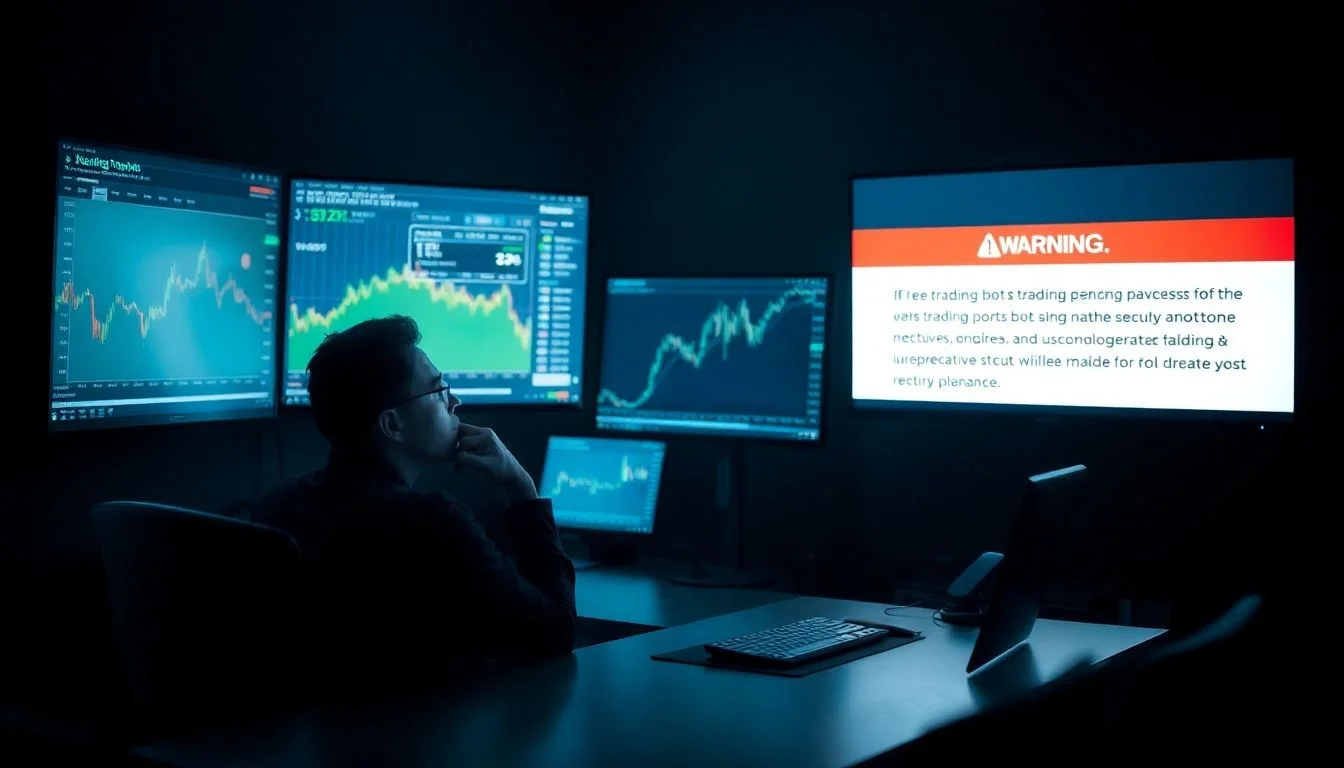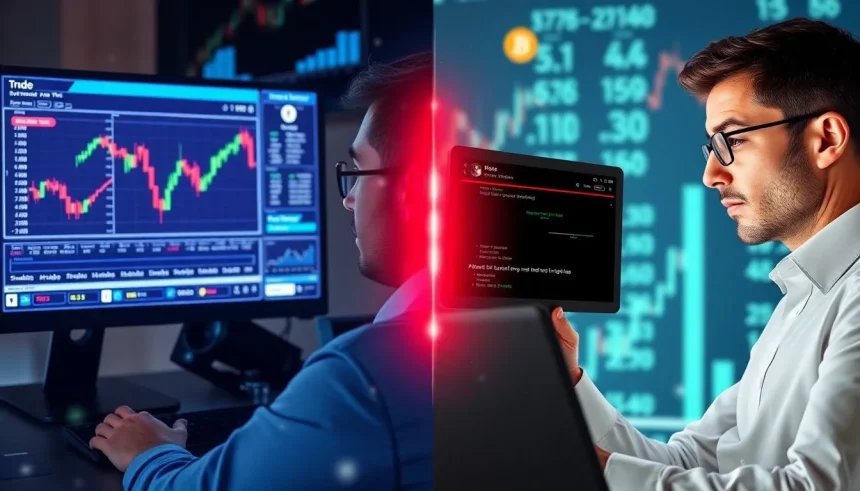In the cryptocurrency market, where over 70% of daily trading volume is automated, free crypto trading bot has become a significant entry point for retail traders. These automated tools, used by an estimated 500,000+ traders globally in 2024, execute trades based on pre-programmed criteria while requiring no upfront investment. Though they offer basic automation features like portfolio tracking and market monitoring, users must evaluate significant security risks and technical limitations before deployment.
Understanding free trading bots
Free trading bots are automated software programs that execute cryptocurrency trades based on predetermined parameters, without requiring an initial financial investment. These digital tools analyze market data and make trading decisions according to programmed criteria, operating continuously as long as they remain connected to trading platforms.
What sets free trading bots apart from their paid counterparts is not just the absence of cost, but often their scope of functionality. Free versions typically offer basic features such as market monitoring and simple trade execution, while reserving more sophisticated capabilities for premium versions.
Most free trading bots provide fundamental features that allow users to:
- Monitor basic market indicators
- Execute simple buy and sell orders
- Implement basic trading strategies
- Track portfolio performance
- Set up price alerts
However, the functionality varies significantly between different free offerings, with some providing surprisingly robust features while others offer only the most basic capabilities.
Key advantages of free trading bots
Cost benefits
The most obvious advantage of free trading bots is the ability to enter the world of automated trading without financial commitment. This accessibility allows newcomers to explore and understand automated trading mechanisms without risking subscription fees or purchase costs.
For students and beginning traders, free bots serve as practical learning tools, providing hands-on experience with automated trading systems. They can experiment with different strategies and understand market mechanics without the pressure of losing subscription fees if their approaches prove unsuccessful.
Basic automation capabilities
Free trading bots excel in providing fundamental automation that can significantly improve trading efficiency. Their ability to operate continuously transforms how traders interact with cryptocurrency markets, especially for those who cannot monitor markets constantly.
These bots can execute trades with remarkable precision, free from emotional influences that often plague human traders. This emotional detachment represents one of the most valuable aspects of automated trading, as it helps maintain discipline in volatile market conditions.
“The true value of free trading bots lies not in their cost savings, but in their ability to introduce traders to automated strategy execution while maintaining emotional distance from market fluctuations.”
Key automation benefits include:
- Round-the-clock market monitoring
- Consistent strategy execution
- Elimination of emotional trading decisions
- Basic portfolio tracking
- Simultaneous monitoring of multiple cryptocurrencies
When properly configured, even basic free bots can help traders maintain consistent trading practices and avoid common emotional pitfalls like panic selling or FOMO buying. However, these advantages must be weighed against significant limitations that come with free solutions.
Critical disadvantages and risks
Technical limitations
Free trading bots often come with substantial technical constraints that can significantly impact their effectiveness. The most notable limitation is the restricted access to advanced trading features and sophisticated algorithms. While paid versions might offer complex technical analysis tools and multiple strategy combinations, free versions typically stick to basic indicators and simple trading patterns.
Performance issues frequently arise with free bots, particularly during high-volume trading periods. These limitations can manifest as delayed executions, missed trading opportunities, or system crashes at crucial moments. Such technical constraints can prove particularly problematic in the fast-moving cryptocurrency market, where timing often makes the difference between profit and loss.
Security concerns
The security implications of using free trading bots represent perhaps the most serious consideration for potential users. Free bots often lack robust security features, making them potentially vulnerable to various forms of cyber attacks and unauthorized access.
“The real cost of free trading bots may not be measured in dollars, but in the potential security risks they introduce to your trading operations.”
Critical security risks include:
- Vulnerable API connections
- Limited encryption capabilities
- Potential for malicious code injection
- Inadequate data protection measures
- Risk of unauthorized access
The consequences of these security vulnerabilities can be severe, potentially resulting in lost funds or compromised trading accounts. Users must carefully evaluate whether the cost savings justify these increased security risks.
Reliability problems
Reliability issues plague many free trading bots, manifesting in various ways that can impact trading performance. These problems often become apparent during critical market moments when the bot’s performance matters most.
Free bots typically offer limited or no customer support, leaving users to troubleshoot problems on their own. This lack of support can prove particularly challenging for newcomers who may struggle to identify and resolve technical issues effectively.
Many users report inconsistent performance patterns, with bots working well for periods before experiencing unexpected failures or erratic behavior. These reliability issues can lead to missed trading opportunities or, worse, executed trades that don’t align with the intended strategy.
The reliability challenges extend beyond mere technical glitches. Free bots often receive infrequent updates, meaning they may not adapt quickly to changing market conditions or new security threats. This lag in updates can leave users vulnerable to both market inefficiencies and security risks.
When evaluating the reliability of free trading bots, consider these common issues:
- Inconsistent execution of trading strategies
- Unexpected system crashes
- Delayed or missing trade notifications
- Synchronization problems with exchange APIs
- Limited ability to handle market volatility
These limitations underscore the importance of maintaining close oversight when using free trading bots and having backup plans for when systems fail. While free bots can serve as useful tools for learning and basic automation, their reliability constraints make them potentially risky for managing significant trading operations.

Real user experiences
Common success scenarios The most frequently reported success stories come from users who maintain active oversight while leveraging automation. Beginners often find their footing with simple arbitrage strategies before progressing to more complex approaches. Portfolio diversification through multi-coin trading has proven particularly effective, with many users reporting steady gains through carefully managed high-frequency trading operations.
Typical problems encountered Technical difficulties present the most common challenges, particularly during periods of high market volatility. Users frequently report API connection issues that result in missed trading opportunities. Many struggle with optimal parameter configuration, while others face strategy performance degradation over time. Market extremes often expose the limitations of automated systems, leading to unexpected behavior.
Learning curves Most users require a substantial time investment to become proficient with trading bots. The typical learning period spans 2-3 months for basic functions, while mastering advanced features can take 6 months or longer. Those with programming knowledge generally adapt more quickly, though understanding market fundamentals remains essential regardless of technical expertise.
Transition to paid solutions The journey from free to paid solutions typically begins once users demonstrate consistent profitability with basic features. Security concerns often drive this transition, as does the need for more sophisticated trading capabilities. Many users report that the investment in premium features pays for itself through improved performance and reliability.
Making an informed decision
When free bots make sense Free trading bots serve as excellent learning tools for those new to automated trading. They provide a risk-free environment to test basic strategies and understand market mechanics. Small portfolio managers and those conducting market research can benefit significantly from these tools without committing financial resources.
When to avoid them Large portfolio management requires more sophisticated tools than what free bots typically offer. High-stakes trading operations demand reliability and features that usually come with paid solutions. Similarly, complex trading strategies often exceed the capabilities of free alternatives, making them unsuitable for advanced trading operations.
Alternative solutions The market offers various alternatives to free trading bots, including semi-automated platforms and copy trading services. Some traders find success with hybrid approaches that combine manual oversight with automated execution. Professional trading services can provide a middle ground between fully automated and manual trading.
Cost-benefit considerations Evaluating the true cost of free trading bots requires considering both obvious and hidden factors. Time investment in learning and maintaining the system must be weighed against automation benefits. Security risks and feature limitations need careful evaluation against specific trading needs and goals.
Conclusion
Free trading bots offer a valuable entry point into automated cryptocurrency trading, providing essential learning opportunities and basic automation capabilities. However, their limitations in security, reliability, and functionality make them better suited for learning and small-scale operations rather than serious trading endeavors.
The optimal approach involves starting with free solutions to understand automated trading fundamentals, while maintaining realistic expectations about their capabilities. As trading operations grow and proficiency increases, transitioning to paid solutions often becomes necessary to ensure security, reliability, and access to advanced features.
Success with trading bots, whether free or paid, ultimately depends on maintaining active oversight, understanding market fundamentals, and developing solid risk management strategies. While automation can enhance trading efficiency, it should complement rather than replace human judgment in cryptocurrency trading.





